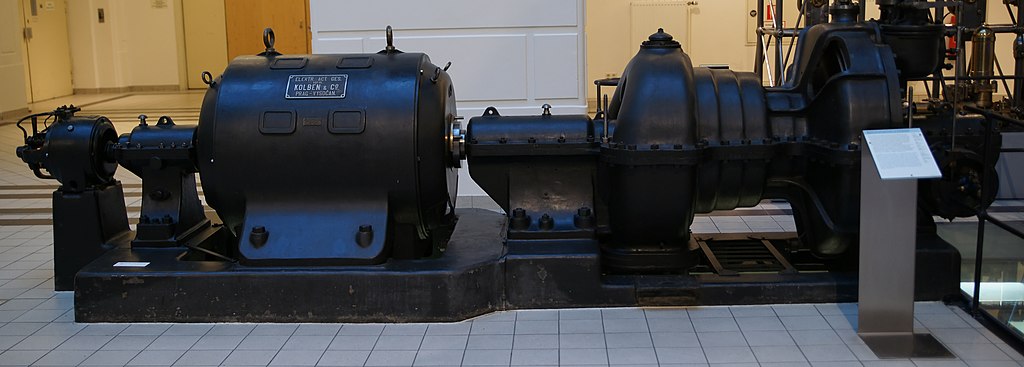As we have already written in our article “The beginnings of the electrification of Germany“, electric current was initially only needed for lighting. Each of these lighting installations had its own generator, which was driven either by a steam engine or a stationary gas engine. In 1888, Nikola Tesla patented the first electric motor for alternating current. This also made it possible to drive machines electrically that had previously been driven by water power or with steam engines. However, the electricity for this still had to be generated locally. Interconnected grids as we know them today did not exist at that time.
The electric motor replaces drive via transmission belt
This also made it possible to drive machines electrically that had previously been driven by water power or with steam engines. With the electric motor, it was possible to drive pumps, saws, mills, weaving machines and much more individually without the transmission belts that were prone to failure. After it was possible in 1891 to transport high-voltage three-phase current between Frankfurt am Main and Lauffen near Heilbronn over a distance of 176 kilometres, alternating current became established in Germany. With alternating current, the effective radius of the power plants also increased significantly, which had previously been limited to a few kilometres. Now it was possible to build power plants directly at the sources of raw materials such as lignite mines, reservoirs or rivers. Westinghouse and Tesla built the world’s first large-scale power plant at Niagara in 1895. Only three years later, the largest hydroelectric power plant in Europe went into operation in Rheinfelden on the border with Switzerland.

Image: Machine set with steam turbine, directly connected to three-phase generator. Year of construction 1910; speed 2,000/min electric power 250 kW. Vienna Technical Museum, CC BY 3.0, via Wikimedia Commons
Invention of the steam turbine makes power plants more efficient
Large coal-fired power plants were built, initially powered by steam engines. However, the efficiency was only ten percent. With the invention of the steam turbine at the turn of the century, it was possible to use steam far more efficiently. The first usable steam turbines were developed in 1883 by the Swede Carl Gustav Patrik de Laval and in 1834 by the Englishman Charles Parsons. With the steam turbine, efficiency increased from 10 to 30 percent compared to the steam engine. Due to the drastic increase in efficiency, coal-fired power plants then also became larger and more powerful.
Power plants are springing up like mushrooms
With the invention of the electric motor, the demand for electricity also increases. That’s why electricity plants spring up like mushrooms. In 1900 there were already 652 power stations. By 1913 there were already 4,040 power stations with a total output of 2,100 MW. From the 1920s onwards, electricity also reached large areas of the countryside. With the help of high-voltage power lines, electricity can be transported over ever greater distances. The electricity grids become larger and larger, but are still independent and tied to individual power plants.
1924 sees the creation of the first interconnected grid
In 1924, with a line between Pulheim in North Rhine-Westphalia and two hydroelectric power plants in the Black Forest and in Austria, it was possible for the first time to connect several sub-grids to form the first interconnected grid. This first interconnected grid, into which several power plants could feed simultaneously, had a total length of 600 kilometres. This paved the way for the creation of further interconnected grids, which were eventually expanded to become the European electricity network.
The following articles have been published so far in the series on the history of electricity:
Who invented the electric current?
The beginnings of the electrification of Germany
The electricity war over direct current and alternating current






